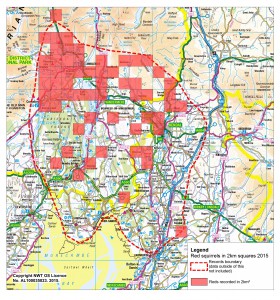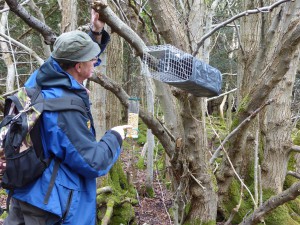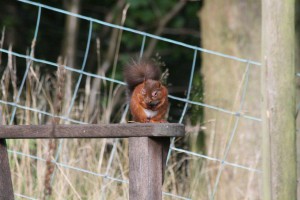Westmorland Red Squirrels welcomes the recent call for a national army of volunteers to save our red squirrels. More details here: http://www.wildlifetrusts.org/news/2017/02/24/vital-volunteers-needed-save-our-last-red-squirrel
Category: Uncategorized
Results of the RSNE squirrel monitoring programme, Spring 2016
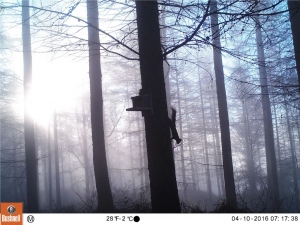 This report details the results of red and grey squirrel range monitoring organised by Red Squirrels Northern England (RSNE) in spring 2016. The aim of this standardised monitoring is to collect a dataset over time that will help demonstrate the impact of red squirrel conservation activity on the distribution of red and grey squirrels. The results of standardised surveying in 293 woodland sites are detailed here, together with additional data collected from a variety of sources to provide a current snapshot of red and grey distribution across northern England. You can download the full 26 page report here>>
This report details the results of red and grey squirrel range monitoring organised by Red Squirrels Northern England (RSNE) in spring 2016. The aim of this standardised monitoring is to collect a dataset over time that will help demonstrate the impact of red squirrel conservation activity on the distribution of red and grey squirrels. The results of standardised surveying in 293 woodland sites are detailed here, together with additional data collected from a variety of sources to provide a current snapshot of red and grey distribution across northern England. You can download the full 26 page report here>>
South Lakes school offers haven for red squirrels
The Westmorland Gazette reports that youngsters at Dean Barwick Primary School, Witherslack, donated all the proceeds from their weekly film club to the Westmorland Red Squirrel Society and raised enough cash for a nest box and feeder. Read more>>
The nestboxes and feeders are for sale and you can find out more about them here>>
Fighting for the reds
Mark Whitley’s country diary – July 2016 – in the latest issue of The Countryman describes the progress that our group is making to protect red squirrels in south east Cumbria. You can read the text of the article here>>
The bloody battle to save the red squirrel
This article by Erik Stokstad appears in the online version of Science. Read the article here>>
The UK Squirrel Accord
 Adrian Vass, Manager of the UK Squirrel Accord (UKSA)>> delivered an excellent presentation at this year’s Annual General Meeting on 26 May 2016. Its role is to secure existing red squirrel populations, particularly in northern Britain, and to reverse the damage caused by grey squirrels to broadleaved woodlands and secure multiple benefits across the whole of the UK.
Adrian Vass, Manager of the UK Squirrel Accord (UKSA)>> delivered an excellent presentation at this year’s Annual General Meeting on 26 May 2016. Its role is to secure existing red squirrel populations, particularly in northern Britain, and to reverse the damage caused by grey squirrels to broadleaved woodlands and secure multiple benefits across the whole of the UK.
Adrian explained UKSA’s role in encouraging scientific research into vaccines for grey squirrel control and to combat squirrel pox virus in reds. Initiatives to re-introduce red squirrels were also under consideration, provided they meet International Union of Nature Conservation (IUCN) Guidelines, and also to try landscape-scale red squirrel exclosures, initially in North Norfolk, Purbeck and The Lizard peninsula in Cornwall.
Adrian spoke about the British Association of Shooting and Conservation (BASC) initiative, which involves its members trapping and shooting greys. This is being piloted successfully in the Midlands and could be appropriate in our area. He also spoke about evolving the UKSA membership structure, which could see opportunities for volunteer groups such as ours to be represented on a UKSA Group Forum, which could inform and influence the thinking of the founding signatories.
Our Chairman writes for the Westmorland Gazette
PODIUM: Much that people can do to help the plight of red squirrels
Red squirrel conservation groups in the North of England and North Wales are doing a remarkable job. Over the last decade thousands of volunteers have swelled the ranks of the dedicated few who refuse to let the red squirrel be lost for ever. Read more>>
Squirrelpox Virus in South Lakeland
Sadly we have to report that cases of the squirrelpox virus have been found in Little Langdale, Kentmere and around the Grasmere area. This demonstrates just how important it is to keep red and grey squirrel populations apart. Grey squirrels are unaffected by the squirrelpox virus, but they pass it on to red squirrels where it can decimate a local red population, with infected red squirrels suffering a slow and painful death within a couple of weeks. Grey squirrels travel long distances looking for new territories so the disease could spread to other areas very quickly if not kept in check. Natural food isn’t as plentiful this year as last, another reason for squirrels to be on the move.
We expect some of the red squirrels to survive in the areas recently affected by the virus, and the populations to recover in future years, but we need to keep up our efforts to protect them. Our volunteers are working very hard to control the spread of grey squirrels – this is not something we relish, but is currently the only way to ensure our red squirrels can survive here in South Lakeland. The practical and financial support from local residents and our members is vital for our work to continue, and if you can help in any way we’d be delighted to hear from you.
Please let us know immediately if you spot a squirrel which might have the squirrelpox disease. An infected red squirrel exhibits a slower/unsteady movement on the ground, when climbing, getting food and when eating. This gets worse as time goes on and they may stay around the area of a feeder or even inside it. They don’t run away quickly when a human approaches. If there are still healthy squirrels running about the contrast is more noticeable. There may be no visible marks to indicate squirrelpox, but often there are lesions and swelling around the eyes and mouth as shown in the photo – click on it to enlarge.
If you see a red squirrel showing signs of the disease, please contact us immediately on 07836 584201 or any of the other numbers on our Contact page.
All donations to help our red squirrels are most welcome, however small. You can donate here>>
Confor Woodland Show 2015
The Confor Woodland Show 2015 is being held on 10 / 11 September 2015 on the Longleat Estate. For full details, see the event flyer here>>
Q&A Panel: Species introduction
9.45 – 11.00 – 11 September 2015 in the Confor marquee
Chair: Dougal Driver
Introduction: Ian Gambles, Forestry Commission England
Panel: Jonathan Spencer (Forestry Commission); Emma Sheehy (Aberdeen University); Vincent Wildife Trust; Derek Gow; and, BASC.
Join Confor for a bacon butty and put your questions to the panel. The subject of species re-introduction is one that arouses polarised opinions. The moral argument is put forward that we exterminated these species so we should bring them back. Others note that they were exterminated for a reason, and that the factors that made them extinct in the first place e.g. habitat loss and hunting, need to have been dealt with before a re-introduction can take place. There is a legal side to it involving UN conservation body the IUCN, which requires member states to consider re-introducing species that have become extinct for, say, conservation management. This debate will focus on beavers for watercourse management and Pine martens for grey squirrel control.
Friends of the Lake District event in Grasmere on Saturday 15th August
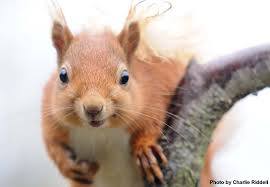 Friends of the Lake District invite you to come along to the new wood at Gillside, Grasmere. Learn about the red squirrels and the hydro scheme. Talks, tours, woodland trail, children’s activities, tea and cake! This is a FREE event. You can book online here>> or download the poster here>>
Friends of the Lake District invite you to come along to the new wood at Gillside, Grasmere. Learn about the red squirrels and the hydro scheme. Talks, tours, woodland trail, children’s activities, tea and cake! This is a FREE event. You can book online here>> or download the poster here>>





